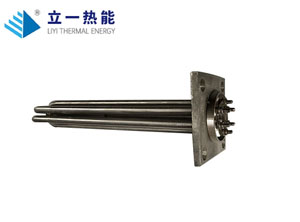After prolonged use, the heating performance of 3D hot bent glass heating tubes is likely to deteriorate due to various factors.
From the perspective of material properties, 3D hot bending glass heating tubes usually use special glass materials and heating materials. The heating material inside the heating tube will undergo lattice vibration due to the thermal effect of the current during long-term heating, resulting in a gradual weakening of the interatomic bonding force and an increase in resistance. According to Joule's law, Q=I^ {2}Rt \(where \ (Q \) is heat\ (I \) is the current\ (R) is a resistor\ (t \) is time. In the case of constant voltage, an increase in resistance means a decrease in current, which in turn reduces the amount of heat generated and lowers the heating performance.
Glass material can also affect heating performance. Under long-term high temperature environment, the microstructure of glass will change, and crystallization phenomenon may occur, which will alter the thermal conductivity of glass, hinder heat transfer, and prevent the efficient transfer of heat generated by the heating material, resulting in an overall decline in heating performance.

The structural stability of the heating tube is equally important. Under repeated thermal expansion and contraction, the connection parts between the components of the heating tube may become loose. For example, loosening the connection point between the heating wire and the electrode can increase the contact resistance, consume additional electrical energy and generate heat, while reducing the effective power of heating, ultimately leading to a decrease in heating performance. Moreover, prolonged use may cause small cracks in the glass shell, which not only affect the uniformity of heat transfer, but may also trigger chemical reactions such as oxidation of internal materials due to air ingress, further affecting the heating performance.
Environmental factors cannot be ignored. If the 3D hot bending glass heating tube is exposed to high humidity or corrosive gas environment for a long time, the heating materials and metal components inside are easily corroded. Corrosion can alter the chemical composition and physical structure of materials, increase resistance, reduce heating efficiency, and in severe cases, even cause damage to the heating tube, resulting in complete loss of heating function.
In summary, due to various factors such as changes in material properties, deterioration of structural stability, and environmental impact, the heating performance of 3D hot bent glass heating tubes will deteriorate after long-term use. In practical applications, it is necessary to fully consider these factors and take corresponding measures, such as optimizing material selection, improving structural design, and enhancing the usage environment, in order to extend the service life of the heating tube and ensure its stable heating performance.



